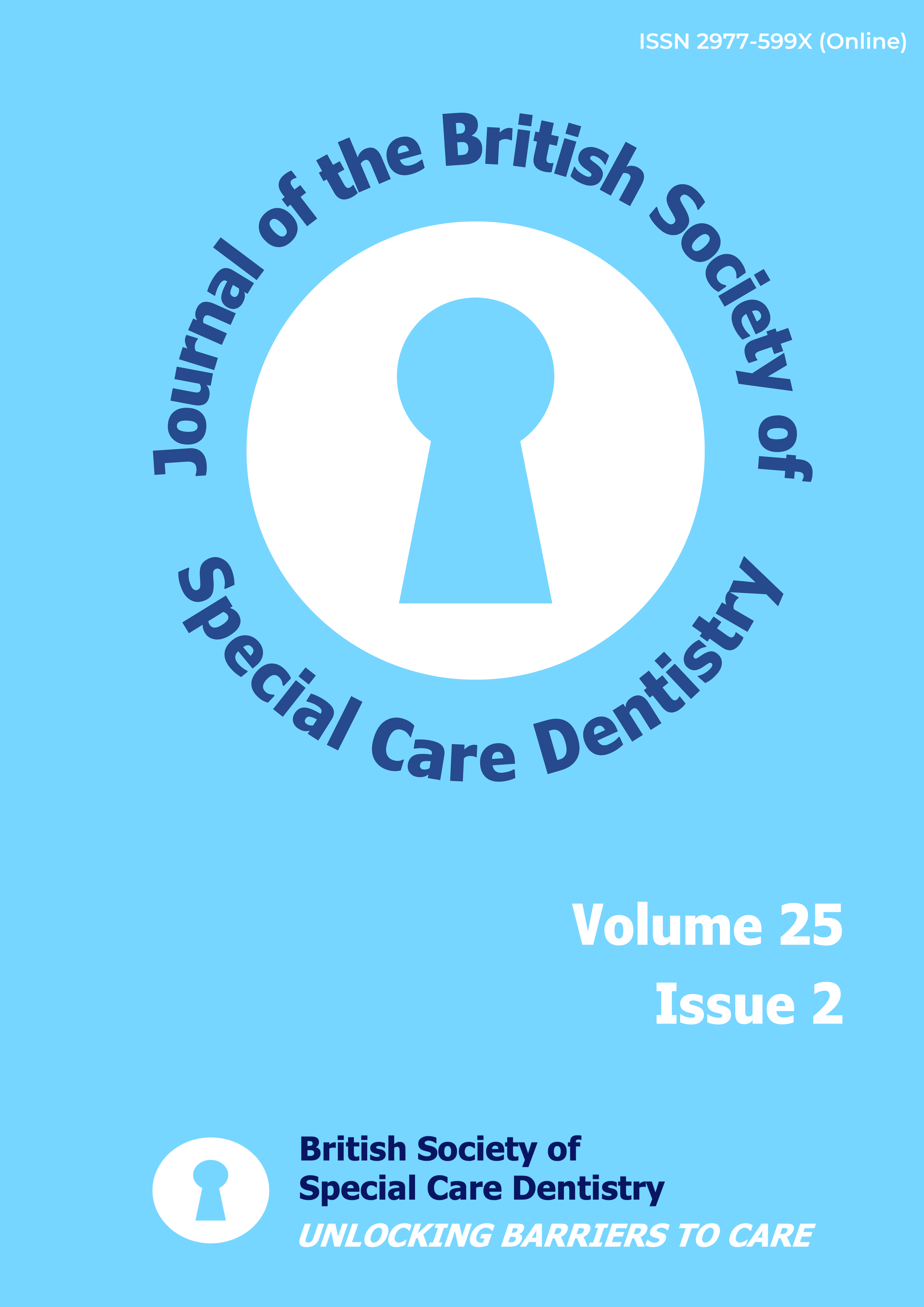Journal of the British Society of Special Care Dentistry
July 2025
Volume: 25
Issue: 2
DOI: https://doi.org/10.63507/NMFL9491
2025 Essay Prize Winner: A narrative literature review on the interdisciplinary approach to optimising implant treatment outcomes in patients with cerebral palsy
Authors: Cunningham O
Abstract:
Introduction
Cerebral palsy presents unique oral health challenges owing to motor impairments, involuntary movements and cognitive limitations. This review investigates implant-supported prostheses for improving oral function and quality of life in individuals with cerebral palsy, emphasising a multidisciplinary approach involving dentists, neurologists, therapists, and caregivers. Managing this patient group involves complexities, like oral hygiene difficulties, requiring tailored, collaborative treatment planning. This review explores current literature on implant therapy's challenges and opportunities in this population, highlighting the need for further research for best practices.
Methods
A literature search across EMBASE, Medline All (R) and Google Scholar used relevant keywords, focusing on English full-text articles from 1960 onwards, supplemented by studies on medically compromised patients and cerebral palsy management. The review adopted a person-centred, interdisciplinary approach, acknowledging care complexities.
Results
The review found varied outcomes for implant treatments in cerebral palsy patients. Some studies reported high success, others noted variations potentially linked to patient factors and study designs. Challenges included maintaining oral hygiene, managing involuntary movements, ensuring patient cooperation and mitigating risks from underlying medical conditions. Despite these challenges, implant-supported prostheses showed potential for improving chewing, speech and quality of life.
Discussion
Successful implant therapy in cerebral palsy patients relies heavily on a multidisciplinary team. This collaborative model enables comprehensive assessment, tailored planning, enhanced cooperation and robust long-term care. Outcome variability underscores the need for more research using rigorous methodologies, larger samples and standardised data collection. Future studies should examine long-term outcomes and the impact of specific cerebral palsy characteristics on success, aiding evidence-based guideline development.
Conclusion
Implant-supported prostheses are valuable for improving oral health and quality of life in individuals with cerebral palsy. A multidisciplinary, patient-centred approach is essential for optimising outcomes. Continued research is vital to refine protocols, address knowledge gaps, and ensure equitable care access.
To access this article please click here.
Please note: members will need to log on to access the article.
If you have a query relating to this article please email:
Articles from BSSCD Journal 25-2

